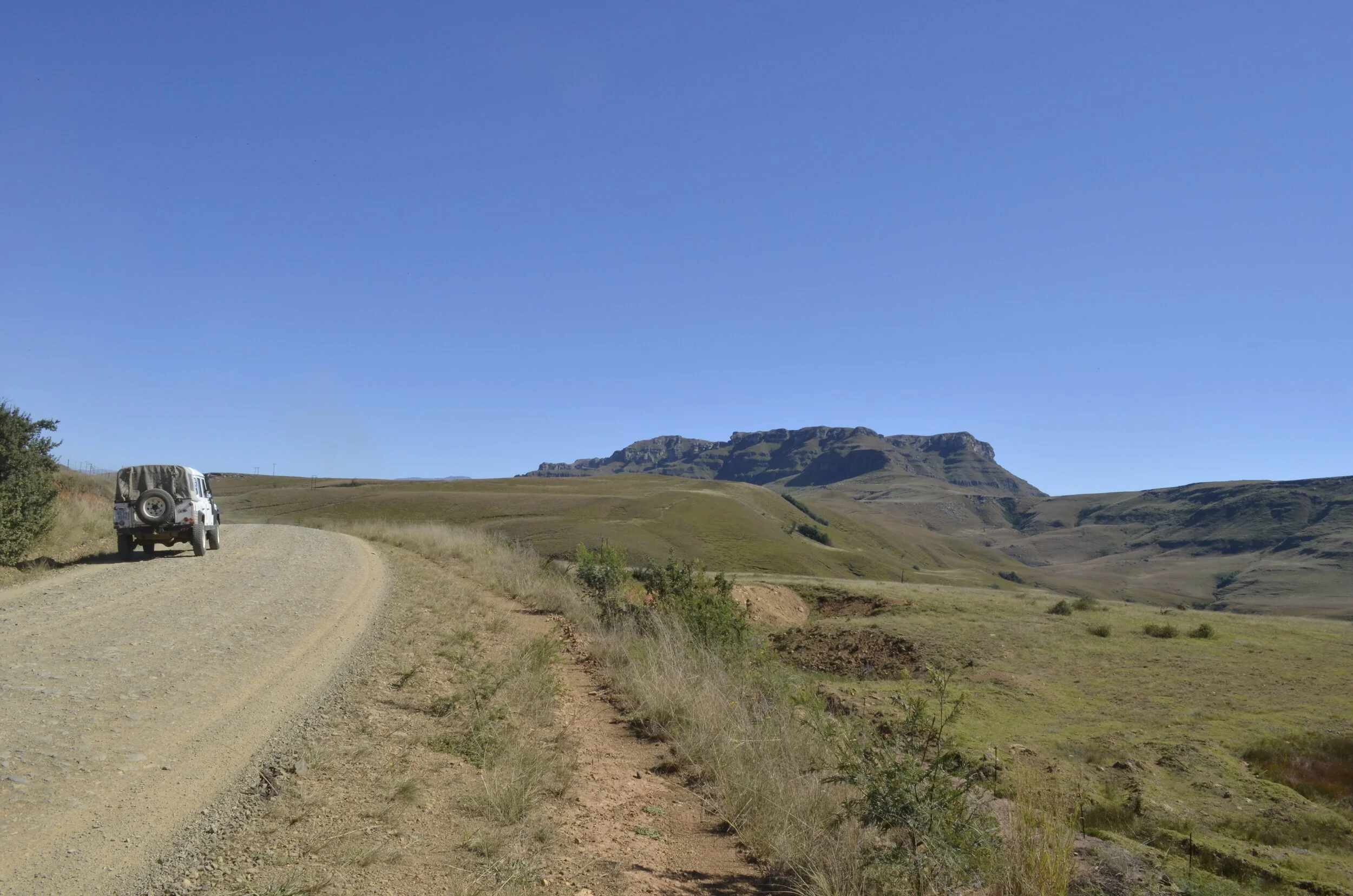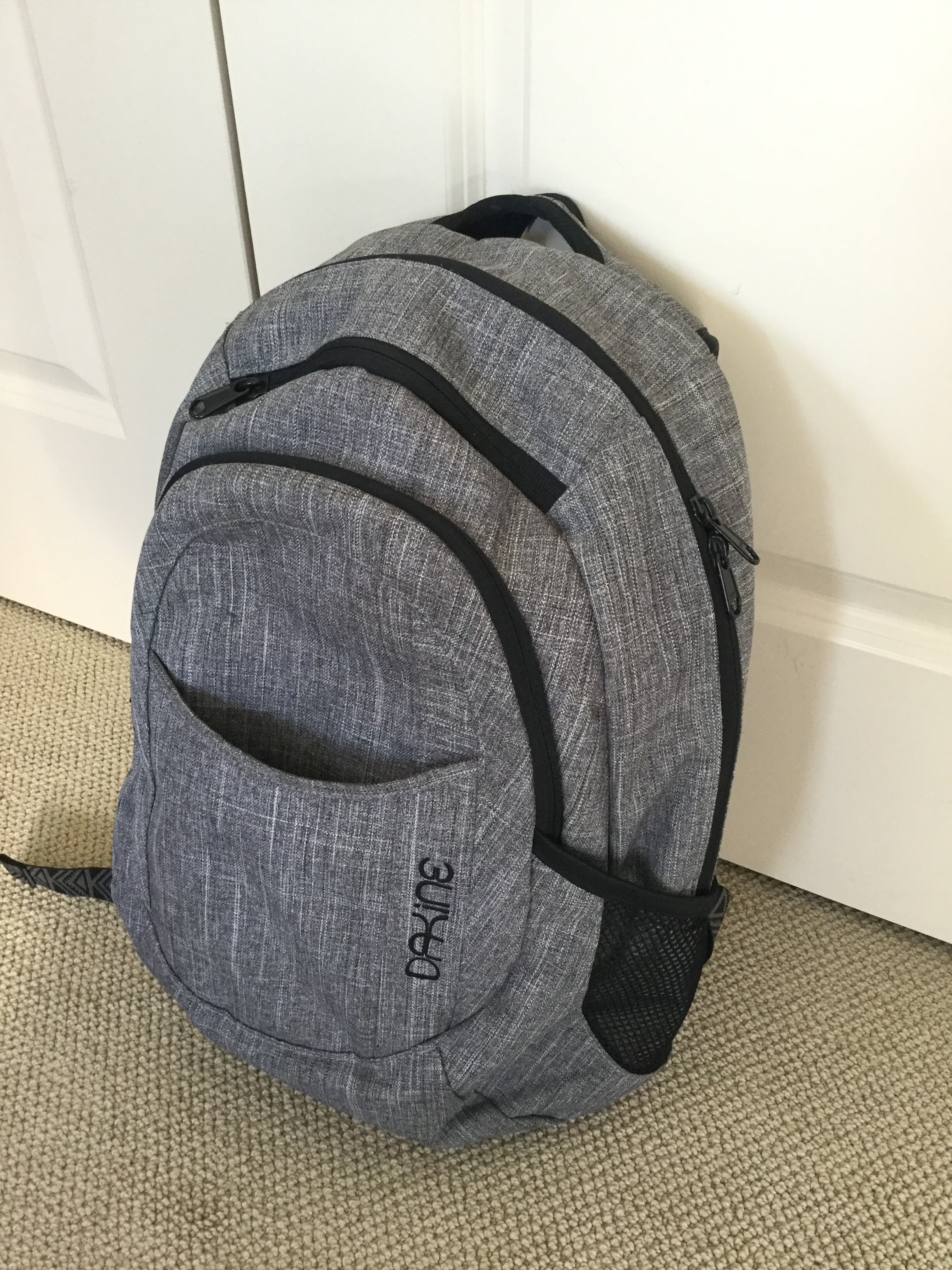Preparing for safari blog route map. You are here:
Mindset and research – how to think about packing and do your homework
Luggage – picking the right container
Personal bag – ready for anything
How to pack – the ABCs
Clothing – dress for success
Safari kit – what do you really need?
What not to bring
Preparing with purpose – thinking about your impact
Personal bag - ready for anything
The function of the personal bag is to keep items handy that you need frequent access to throughout all stages of your journey. This starts with the car ride to the airport, continuing with the long distance flight, your overland 4x4 drive, your boat cruise, game walks, and exploring town. The same principle that informs your luggage choice also applies to your personal bag: understand your needs.
The personal bag has to do all the tricks in all conditions. Here we’re ascending a remote canyon in South Africa, heading up to the waterfall in the distance. Photo by Gustav Greffrath.
Volume. A bag any larger than 1,800 cubic inches (30 liters) will be too big to manage. For most people 1,500 cubic inches should be adequate. Remember, if you have the space you will fill it and then you have to carry it.
Accessibility. Convenience is essential in the personal bag. What are the things you need to reach easily? Is the bag organized in a way that allows you to do that? Water, snacks, sunscreen, camera, can you grab these things from your bag without rummaging around inside it or removing other contents?
Load carrying capability. The smaller your bag the less it will hold and the more comfortable it will be to carry. Even so, with water, food, and a camera setup you can make a small bag heavy. How does the bag feel when loaded? Can you walk for a couple hours with it comfortably? Features like padded shoulder straps and a frame panel (for backpacks) will improve carrying ability. Whatever you plan to take, practice wearing it around with its contents to make sure it feels good.
Appearance. Choose a bag that helps you to blend into your surroundings. Whether you’re in the bush or the city you want to keep a low visual profile. Neutral or earth tones are good colors for a bag.
Features. It’s handy to have some amount of organization in your bag. A couple different compartments, one or two external pockets for small items, maybe a water bottle pocket, can all improve access to what you need. Look for sturdy coil zippers, robust hardware, and tough fabrics and materials. Your personal bag needs to withstand some knocks.
Special considerations. We’re back to the essential question: what are your needs? Is it important that you keep your bag’s contents safe from the elements? Will you be doing activities that place specific demands on your bag, like kayaking?
Examples
Drybag backpack
Like its luggage equivalent, this is a submersible, roll-top cylinder made from heavy duty fabric with shoulder straps. It’s worth noting that not all roll-top backpacks are submersible, so if you need that level of protection make sure the models you consider perform that function. Look for models with some sort of frame panel, otherwise the pack’s contents will poke you in the back.
This one meets all the criteria: right volume, muted color, external pocket, and padded back panel. Photo by Nick Bratton
Advantages:
Best for water and dust protection
Durable materials
Limitations:
Access to the pack interior is not the most convenient
Versions without frame panels can be uncomfortable
Not much in the way of organization
Bottom line: if your need for protecting the pack contents is a priority, then a drybag is worth the trade-offs of access and organization. Try on several different kinds, some are more comfortable than others.
Basic daypack
This category covers an extremely wide range of examples. It can be anything from a school backpack to a climbing pack to a photographer’s backpack. They can have zipper access, drawstrings, lids, the permutations are numerous. Chances are you already have something that fits the bill. If not, there are loads of good choices available that don’t cost a lot.
Good volume, plenty of organization, excellent access, this is the kind of simple pack that will meet most travelers’ needs. Photo by Nick Bratton.
Advantages:
Inexpensive, ubiquitous, and available in many styles
Options exist with good organizational features
Zip openings offer good access to the interior
Limitations:
Cheaply made versions will cause frustration
Not impervious to the elements
Bottom line: As long as your choice has sturdy materials and hardware, is comfortable, and works for you, use it! Remember, it’s about meeting your needs and if you don’t have specific needs, you don’t need a specialist pack. You can improve water and dust protection by packing the contents in plastic zipper bags or lightweight drybags.
Satchel
A satchel is essentially a pack with a single shoulder strap. Think of a bike messenger bag. These are less comfortable to carry when loaded but you can easily reach the interior of the satchel without taking it off, so it shines in the convenience department. This is an alternative for people who don’t like backpacks or have less to carry.
If you’re going to take a satchel, something like this would be a worthy choice. Photo by Larry George II.
Advantages:
Great access to bag contents
Low profile, fits easily in tight spaces
Limitations:
Not as comfortable to carry as a backpack (above a certain weight)
Protection from the elements is not great
Bottom line: if the carrying needs of your personal bag are small and light, a satchel can do the job.





